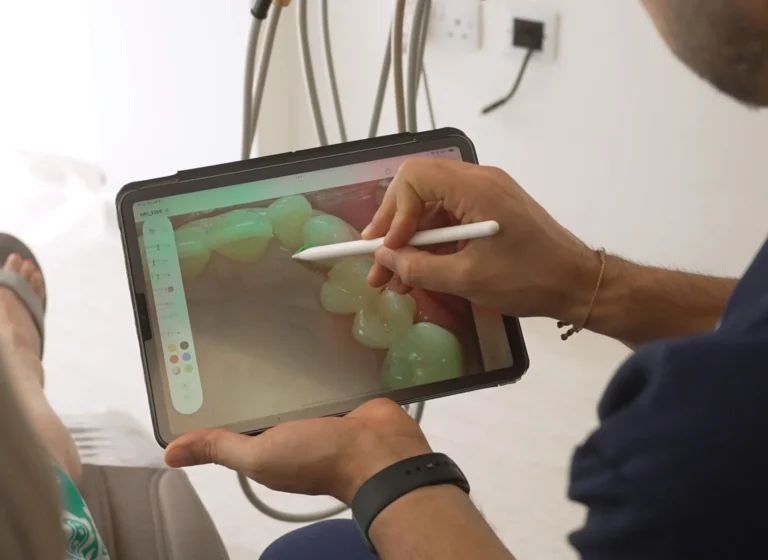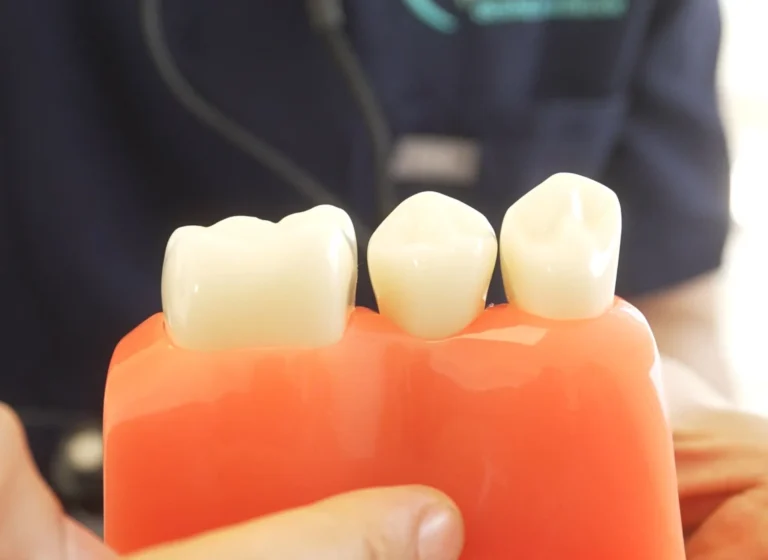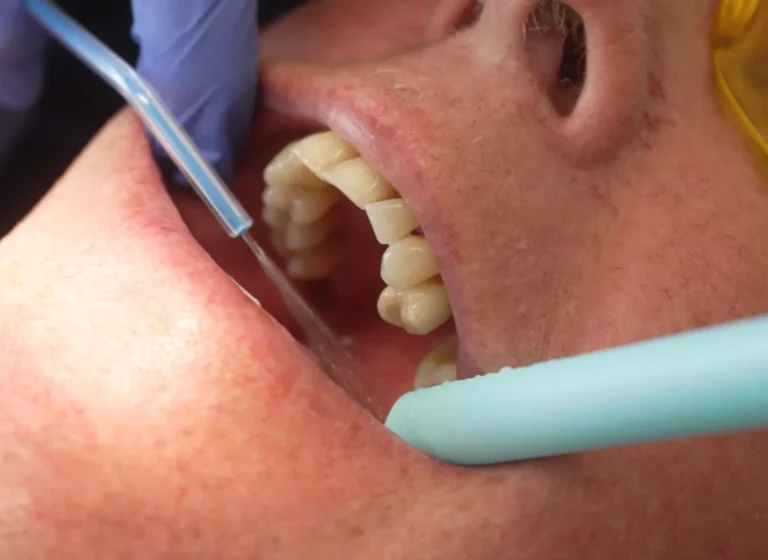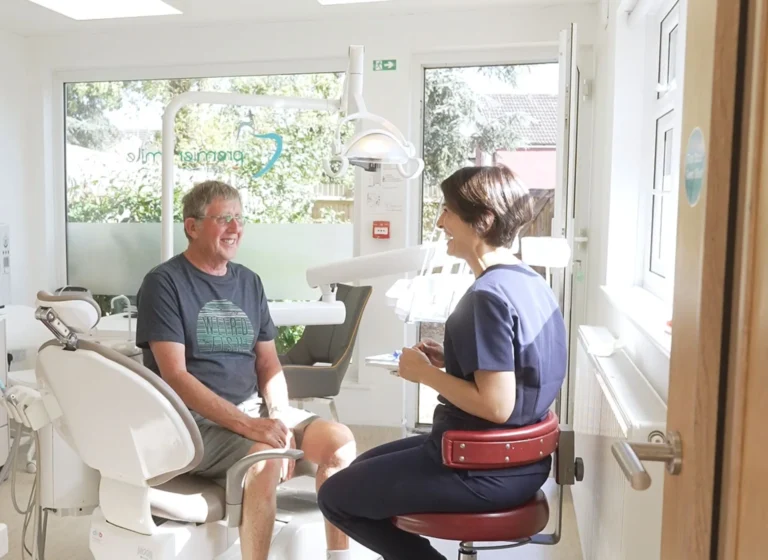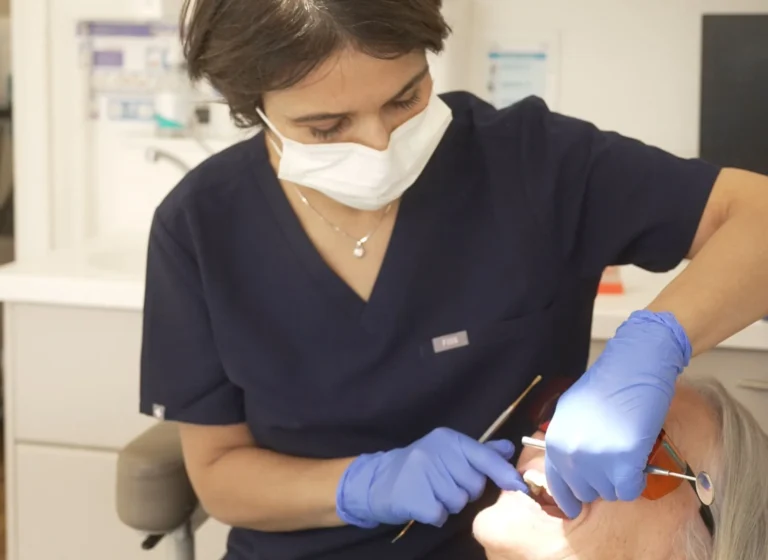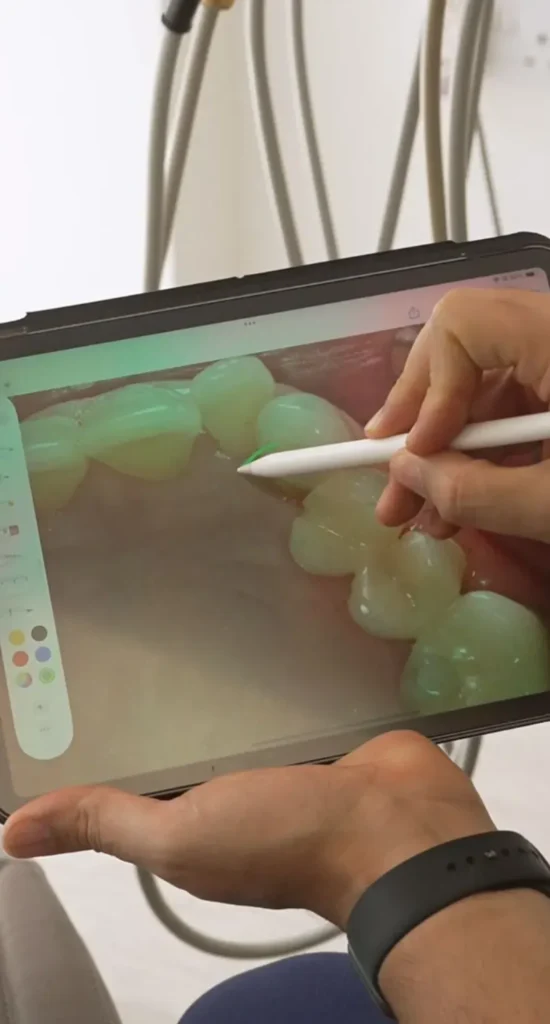What Is a Root Canal?
A root canal is one of the most common and effective dental procedures performed to save a tooth that has been severely damaged by decay or infection. If you’ve been advised to undergo a root canal, it’s natural to have many questions about the procedure. In this article, Dr Nooshin Vasfi will answer everything you need to know about root canals, from what they are to how they work and why they are necessary for your oral health.
By the end of this article, you will have a clearer understanding of why a root canal is often the best solution to saving a damaged tooth, ensuring both comfort and long-term health.
What Is a Root Canal and Why Is It Needed?
A root canal is a treatment used to repair and save a tooth that is badly decayed or infected. Inside each of your teeth is a soft tissue called pulp, which contains nerves, blood vessels, and connective tissue. When this pulp becomes infected due to deep decay or trauma, a root canal is often necessary to remove the infected tissue and prevent further damage.
Why is a Root Canal Needed?
- To avoid tooth extraction: The primary reason for a root canal is to save a tooth that would otherwise need to be removed.
- To eliminate infection: The procedure removes infected pulp and helps prevent the spread of infection to surrounding teeth and gums.
- To preserve tooth function: By treating the infection and restoring the tooth, root canals help maintain your bite and chewing ability.
If left untreated, the infection can spread, causing severe pain and potentially affecting other parts of your mouth. A root canal is an effective way to treat the problem, restoring both your health and the function of the affected tooth.
How Does a Root Canal Work?
The root canal procedure is typically performed in a single visit, although some complex cases may require two appointments. Here’s how the treatment works, as performed by Dr Nooshin Vasfi:
- Examination and Diagnosis: Dr Nooshin Vasfi will first examine the affected tooth using X-rays to determine the extent of the infection. Based on the results, she will develop a treatment plan.
- Anaesthesia: Local anaesthesia is administered to numb the area around the tooth, ensuring you feel no pain during the procedure.
- Removal of the Infected Pulp: Once you’re numb, Dr Vasfi will drill a small opening in the tooth to access the pulp chamber. The infected pulp is carefully removed.
- Cleaning and Shaping: After the pulp is removed, the empty space is thoroughly cleaned and shaped to prepare for filling.
- Filling the Tooth: The tooth is then filled with a special material called gutta-percha to seal the space and prevent future infections.
- Sealing the Tooth: Finally, Dr Vasfi will place a temporary or permanent crown to protect the tooth from further damage and restore its function.
This process may sound intimidating, but it’s a routine and effective procedure designed to relieve pain and preserve the health of your tooth under the care of Dr Nooshin Vasfi.

What Are the Symptoms That Indicate You Need a Root Canal?
There are several signs that can indicate you may need a root canal. If you’re experiencing any of the following symptoms, it’s important to consult your dentist for an evaluation:
- Severe tooth pain: Persistent pain, especially when chewing or applying pressure to the tooth.
- Tooth sensitivity: Prolonged sensitivity to hot or cold, even after the source has been removed.
- Swollen or tender gums: Gum swelling near the affected tooth or the presence of a pimple-like bump on the gums.
- Discolouration of the tooth: A tooth that appears darker than the surrounding teeth may indicate nerve damage or infection.
- Tenderness in the nearby area: Pain or discomfort in the jaw or near the infected tooth.
If you notice any of these symptoms, it’s essential to seek dental attention as soon as possible to avoid complications.
Is a Root Canal Procedure Painful?
Many patients worry about the pain associated with a root canal, but the truth is, the procedure is usually no more uncomfortable than having a cavity filled. Thanks to modern techniques and local anesthesia, root canal treatments are often pain-free.
What to Expect:
- Before the procedure: Anesthesia will be applied to numb the area, so you shouldn’t feel any pain.
- During the procedure: Most patients feel only slight pressure as the dentist works on the tooth. There may be some sensation, but it should not be painful.
- After the procedure: You may experience mild discomfort or sensitivity for a few days after the treatment, but this can usually be managed with over-the-counter pain relievers.
In fact, many patients report feeling relief from their tooth pain immediately after the procedure because the infection is removed.
How Long Does a Root Canal Take?
The length of a root canal procedure depends on the complexity of the case and the tooth being treated. Generally, a root canal can take anywhere from 60 minutes to 90 minutes. For more complicated cases, such as those involving molars with multiple roots, the procedure may take longer or require a follow-up appointment.
After the treatment, the tooth will need some time to heal, but you should be able to return to your regular activities the following day. The healing process typically takes a few weeks, but any discomfort should subside within a few days.
What Are the Benefits of a Root Canal?
Root canal treatments offer several benefits for your oral health and overall well-being, including:
- Prevention of tooth loss: By saving your natural tooth, a root canal eliminates the need for more invasive treatments like implants or bridges.
- Relief from pain: A root canal removes infected tissue that causes pain, providing immediate relief from discomfort.
- Restoration of function: After the procedure, the tooth is restored to its full function, allowing you to chew and speak normally.
- Improved aesthetics: The treated tooth can be restored with a crown, which blends seamlessly with the rest of your teeth.
Ultimately, a root canal helps preserve your smile and prevents further complications caused by untreated infection.
Conclusion: What Is a Root Canal?
A root canal is a safe and effective procedure designed to save a damaged tooth and relieve pain caused by infection. If you’re experiencing symptoms such as persistent tooth pain, sensitivity, or swelling, it’s important to seek professional help before the issue worsens. A root canal offers a long-term solution to restoring your tooth’s health and function.
If you think you may need a root canal or gum disease, or want to learn more about the procedure, book a consultation with Dr Nooshin Vasfi. I’m here to guide you through every step of the treatment process and ensure your comfort.
Contact me at info@nvendospecialist.co.uk to request more information today!
Or visit me at Premier Smile Dental Excellence in 34 Hockliffe St, Leighton Buzzard LU7 1HJ, UK.

